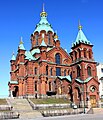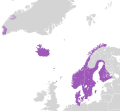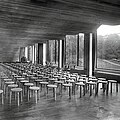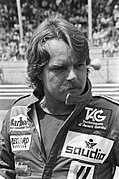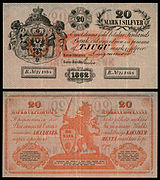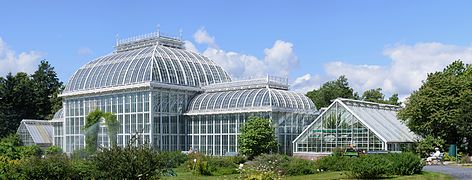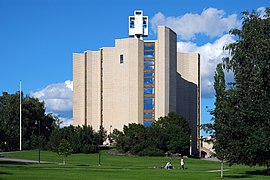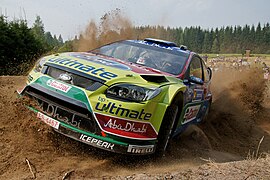The Finland Portal


Finland, officially the Republic of Finland, is a Nordic country in Northern Europe. It borders Sweden to the northwest, Norway to the north, and Russia to the east, with the Gulf of Bothnia to the west and the Gulf of Finland to the south, opposite Estonia. Finland covers an area of 338,145 square kilometres (130,559 sq mi) and has a population of 5.6 million. Helsinki is the capital and largest city. The vast majority of the population are ethnic Finns. Finnish and Swedish are the official languages, with Swedish being the native language of 5.2% of the population. Finland's climate varies from humid continental in the south to boreal in the north. The land cover is predominantly boreal forest biome, with more than 180,000 recorded lakes.
Finland was first settled around 9000 BC after the last Ice Age. During the Stone Age, various cultures emerged, distinguished by different styles of ceramics. The Bronze Age and Iron Ages were marked by contacts with other cultures in Fennoscandia and the Baltic region. From the late 13th century, Finland became part of the Swedish Empire as a result of the Northern Crusades. In 1809, as a result of the Finnish War, Finland was captured from Sweden and became a Grand Duchy of Finland, an autonomous state ruled by the Russian Empire. During this period, Finnish art flourished and the idea of full independence began to take hold. In 1906, Finland became the first European state to grant universal suffrage, and the first in the world to give all adult citizens the right to run for public office. Following the Russian Revolution of 1917, Finland declared its full independence. In 1918 the young nation was divided by the Finnish Civil War. During World War II, Finland fought against the Soviet Union in the Winter War and the Continuation War, and later against Nazi Germany in the Lapland War. As a result, it lost parts of its territory but retained its independence. (Full article...)
Selected article -

Kone- ja Siltarakennus Oy ("Kone ja Silta"; Swedish: Maskin- och Brobyggnads Ab; "Maskin o. Bro") is a Finnish former engineering company based in Sörnäinen, Helsinki.
The 1892 founded company grew heavily in the 1920s and 1930s by acquiring Finnish engineering companies; the products were ships, steel bridges, weighing scales, separators and other machinery. The company's separators were produced under brands Lacta and Milka and they were also produced in Sweden, Denmark and France. By the early 1930s Kone ja Silta held virtually the whole Finnish shipbuilding industry. (Full article...)Selected image -
Did you know (auto-generated)

- ... that Sinikka Luja-Penttilä published a novel in the same year that she retired from the Finnish parliament?
- ... that Kuappi in Iisalmi, Finland, holds the Guinness world record for the smallest restaurant?
- ... that the United States severed diplomatic ties with Finland in 1944 because of a personal letter sent to Hitler?
- ... that Meeri Kalavainen, Finland's first minister of culture, helped end a schism in the women's branch of the Social Democratic Party?
- ... that Vieno Simonen was first elected to the Finnish parliament in 1948, ten years after she was widowed with seven children?
- ... that Finnish politician Maija Perho encouraged future president Sauli Niinistö to join the National Coalition Party in the 1960s?
WikiProjects

You are invited to participate in Finland WikiProject, a WikiProject dedicated to developing and improving articles about Finland.
More did you know -
- ...that the Finnish company YIT was responsible for the construction of the Finnish National Opera house, the Helsinki Fair Centre and Cirrus, the tallest high-rise building in Finland?
- ...that the paintings in the Espoo Cathedral were painted over in the 18th century, as they were thought to be "crude and superstitious'?
- ...that there are three unilingually Swedish municipalities in one province of mainland Finland?
- ...that Maria, the Finnish form of Mary, is the most popular Finnish name used during the modern era?
- ...that Finnish film director Valentin Vaala was reportedly so disappointed with his first film that he dumped the original camera negatives into the sea?
Erik Adolf von Willebrand (1 February 1870 – 12 September 1949) was a Finnish physician who made major contributions to hematology. Von Willebrand disease and von Willebrand factor are named after him. He also researched metabolism, obesity and gout, and was one of the first Finnish physicians to use insulin to treat a diabetic coma.
Von Willebrand qualified in medicine in 1896 from the University of Helsinki, where he received his Ph.D. in 1899. He worked at the University of Helsinki from 1900 until 1930. From 1908 until his retirement in 1933, he was the head of the department of medicine at the Deaconess Hospital in Helsinki, where he also was physician-in-chief from 1922 to 1931. (Full article...)General images
In the news
- 2 April 2024 – Viertola school shooting
- A student is killed and two others are injured in a shooting at a school in Vantaa, Uusimaa, Finland. A 12-year-old student is detained. (AP) (Yle)
- 1 March 2024 – 2024 Finnish presidential election
- Alexander Stubb is sworn in as the 13th President of Finland. (Reuters)
- 11 February 2024 – 2024 Finnish presidential election
- Alexander Stubb is elected President of Finland with 51.6% of the vote.(Yle)
- 27 January 2024 – Israel–Hamas war
- The United Kingdom, United States, Australia, Italy, Canada, Finland, the Netherlands, Switzerland, and Germany suspend humanitarian aid to UNRWA over allegations that some UNRWA staff members were involved in the Hamas-led attack on Israel. (BBC News) (CBS News)
- 14 December 2023 – Finland–United States relations
- Finland announces the creation of a defense cooperation agreement with the United States. The agreement will grant Finland access to American military resources for use in defensive operations, while the US will gain military access to Finland in the event of conflict. (Reuters)
- 29 November 2023 – Finland–Poland relations, Finland–Russia relations
- National Security Bureau chief Jacek Siewiera announces that Poland will send "a team of military advisors" to the Finland–Russia border in response to an official request for allied support. Finland says it was unaware of the Polish offer. Russia warns against the move, viewing the concentration of troops on the border as a threat. (Reuters)
Related portals
Northern Europe
Other countries
Selected panorama -
Topics
Categories
Recognized content
Things you can do
- Add the {{Portal|Finland}} template to existing See also sections of Finland-related articles.
- Tag the talk pages of Finland-related articles with the {{WikiProject Finland}} template. (Tip: Use PetScan to find articles not tagged yet by replacing the category "Finnish films" with another category and adjust "Depth" if needed. This tool is helpful for tagging. See also the list of pages not tagged yet.)
- Rate unassessed and unknown-importance articles according to the guidelines. (This tool is helpful for doing these.)
- Translate a Finnish-language article into English.
- Expand a stub into a full article.
- Help with the articles needing attention (watch) and cleanup.
- Create a requested article (watch).
- Support fresh articles (watch).
- Patrol the recent changes.
- Add the following pages to your watchlist:
Associated Wikimedia
The following Wikimedia Foundation sister projects provide more on this subject:
-
Commons
Free media repository -
Wikibooks
Free textbooks and manuals -
Wikidata
Free knowledge base -
Wikinews
Free-content news -
Wikiquote
Collection of quotations -
Wikisource
Free-content library -
Wikiversity
Free learning tools -
Wikivoyage
Free travel guide -
Wiktionary
Dictionary and thesaurus








